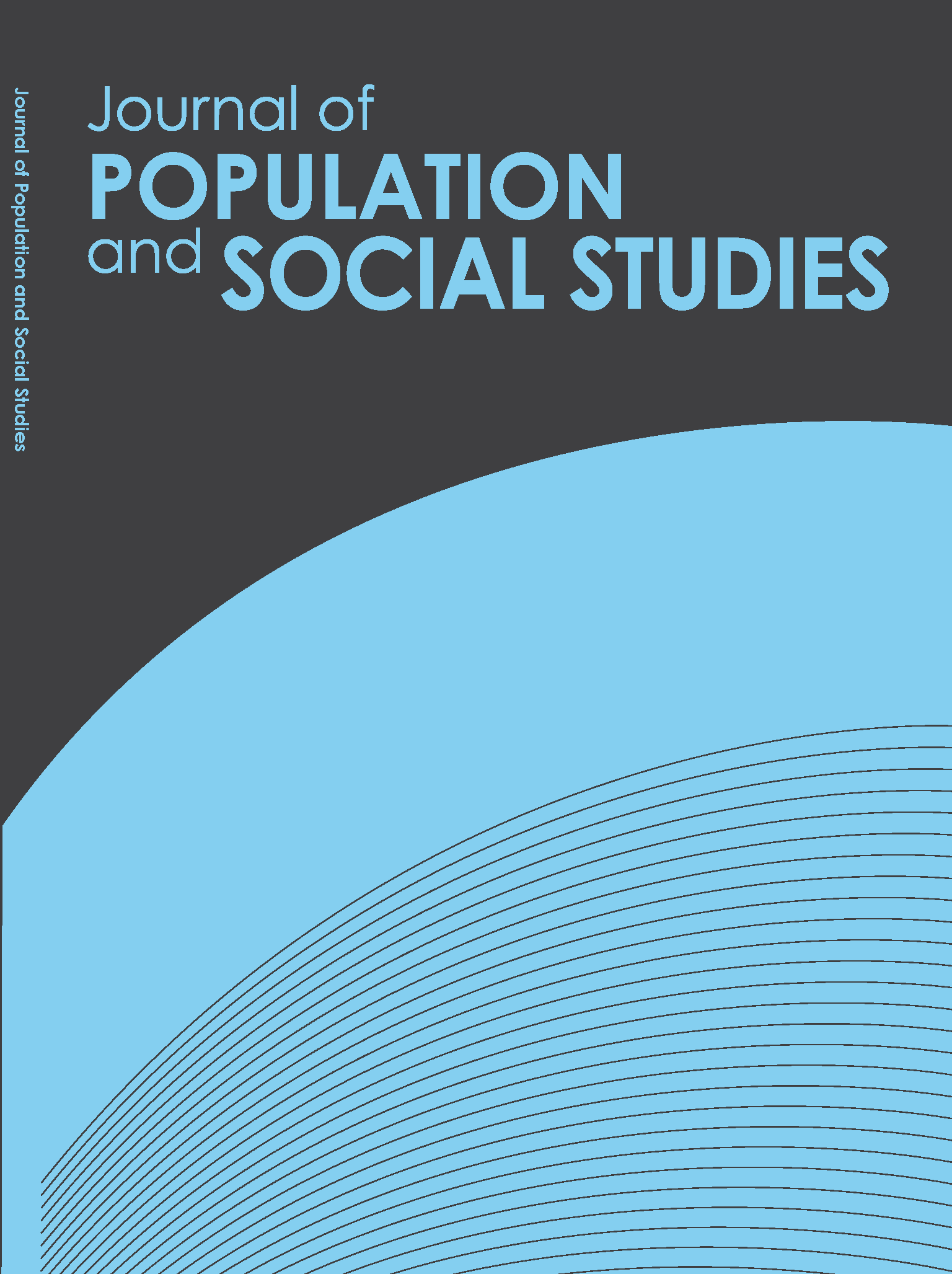Labor Migration in Kanchanaburi Demographic Surveillance System: Characteristics and Determinants
Main Article Content
Abstract
This study examines patterns, characteristics and determinants of short-term labor migration in Kanchanaburi Demographic Surveillance System (KDSS), Thailand. Data from the KDSS Round 2 (2001) and Round 3 (2002) were used. Only persons in the working ages (15-59) are included in the analysis. The probability of engaging in short-term labor migration is modeled using binary logistic regression. The determinants of migration are grouped into four main categories i.e. individual socio-demographic factors, individual economic factors, household factors and contextual factors.
Study findings suggest that labor migrants in KDSS share many similar
characteristics compared to other groups of migrants in previous migration literature i.e. sex, age, work status, marital status, household characteristics and village characteristics. However, differences were also found regarding timing of migration and educational level.
Major forces of labor migration in KDSS are diverse and somewhat
associated with economic factors (income differences, unemployment, number of labor in household, etc.) and migration experience. The determinants of labor migration differ by gender. Individual and household factors appear to have strong impact on male migration, while individual and contextual factors are strong predictors for female migration.
Study findings suggest that labor migrants in KDSS share many similar
characteristics compared to other groups of migrants in previous migration literature i.e. sex, age, work status, marital status, household characteristics and village characteristics. However, differences were also found regarding timing of migration and educational level.
Major forces of labor migration in KDSS are diverse and somewhat
associated with economic factors (income differences, unemployment, number of labor in household, etc.) and migration experience. The determinants of labor migration differ by gender. Individual and household factors appear to have strong impact on male migration, while individual and contextual factors are strong predictors for female migration.
Article Details
How to Cite
Lam, T. Q., Bryant, J. R., Chamratrithirong, A., & Sawangdee, Y. (2007). Labor Migration in Kanchanaburi Demographic Surveillance System: Characteristics and Determinants. Journal of Population and Social Studies [JPSS], 16(1), 117–144. retrieved from https://so03.tci-thaijo.org/index.php/jpss/article/view/84581
Section
Research Articles


